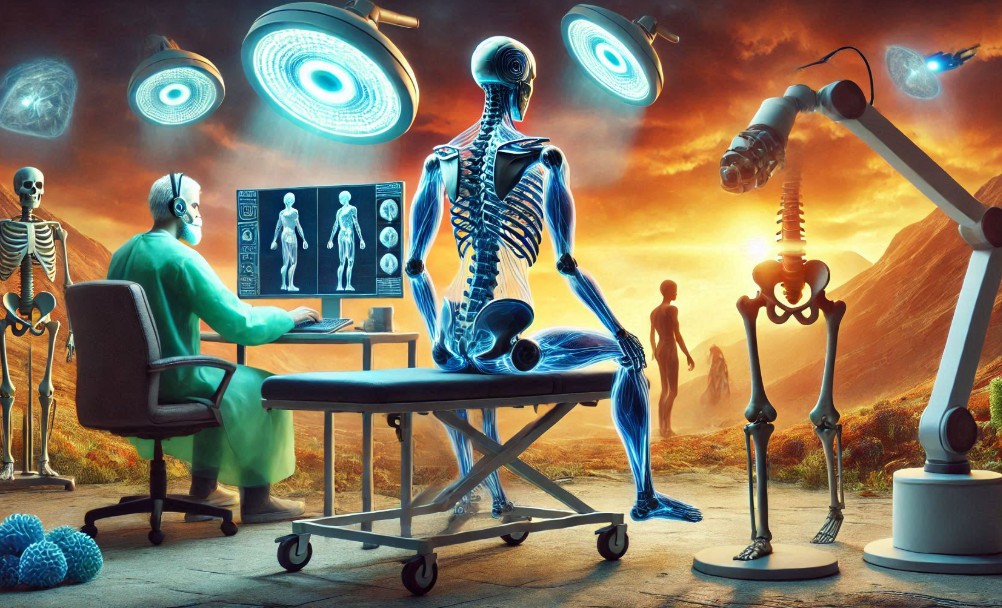In recent years, there has been a significant advancement in the field of Artificial Intelligence (AI) and Augmented Reality (AR). These technologies have become increasingly popular and have the potential to enhance virtual experiences in various fields such as gaming, education, healthcare, and...
Artificial Intelligence Helping People with Musculoskeletal Disorders

Recent advancements in modern technology have made it possible to revolutionize the way we approach healthcare for individuals facing challenges related to movement and physical strain. Cutting-edge systems are now being implemented to enhance diagnosis, treatment, and recovery processes for those affected by chronic pain or injuries involving the bones, muscles, and connective tissues. These tools are not only speeding up medical procedures but also offering more personalized care that adapts to the unique needs of each patient.
One of the most significant changes lies in the integration of sophisticated tools that provide quicker and more accurate assessments. By analyzing large amounts of data, these systems can help medical professionals detect issues much earlier, allowing for better outcomes through timely interventions. Furthermore, rehabilitation programs powered by this technology can now be tailored more precisely to each individual, reducing recovery time and improving overall effectiveness.
As the field continues to evolve, the potential for improving quality of life for individuals struggling with physical limitations becomes even greater. These innovations are transforming healthcare, offering new hope for those seeking relief from pain or mobility challenges.
Revolutionizing Musculoskeletal Disorder Treatment
The integration of modern technological solutions has sparked a transformation in the way chronic pain and mobility issues are managed. These innovations are providing new methods for detecting, diagnosing, and treating conditions that affect joints, bones, and muscles, significantly improving patient outcomes and recovery times. Traditional approaches are being supplemented with advanced tools that offer more accurate insights and more effective treatments tailored to individual needs.
One of the key advancements is the ability to leverage large datasets to detect abnormalities in the early stages of an issue. Machine learning algorithms can now analyze a wide range of medical data, including imaging and patient histories, allowing for more precise diagnostics. This data-driven approach enables doctors to identify problems that may not be immediately visible through conventional methods, leading to quicker interventions and better long-term management.
Additionally, these technologies are facilitating personalized treatment plans. Rather than relying on a one-size-fits-all solution, patients now benefit from customized therapies based on their specific conditions. This individualized care can be particularly beneficial in managing chronic pain or recovering from surgery or injury.
- Improved diagnostic accuracy with advanced imaging analysis
- Faster recovery times through personalized rehabilitation programs
- Better management of chronic pain using real-time data monitoring
As these innovations continue to evolve, the potential to revolutionize the treatment landscape grows. From early diagnosis to tailored rehabilitation, these advancements are transforming the approach to recovery and improving the quality of life for individuals living with chronic mobility issues.

AI’s Role in Early Diagnosis and Detection
Advancements in technology are making it possible to detect issues related to movement and joint function much earlier than before. By analyzing large volumes of data, advanced systems can identify early signs of abnormalities that might not be noticeable through conventional diagnostic methods. Early detection plays a critical role in preventing the progression of conditions and reducing the need for invasive procedures or lengthy treatments.
Data-Driven Diagnosis for Precise Detection
One of the major contributions of these technologies lies in their ability to process and interpret vast amounts of medical data quickly and accurately. By examining medical images, patient records, and other diagnostic data, these tools can spot subtle patterns and anomalies that could otherwise go unnoticed. This approach increases the likelihood of catching problems at the onset, allowing for faster intervention and a higher chance of successful treatment.
Improving Accuracy and Reducing Human Error
Traditional diagnostic methods often rely on the experience and interpretation of medical professionals, which can sometimes lead to errors or delayed recognition of critical issues. With automated systems, the risk of misdiagnosis is significantly reduced. By relying on objective data and advanced algorithms, these technologies offer a more reliable and consistent way to detect early-stage conditions that affect the bones, muscles, and joints.
Improving Rehabilitation with AI Technology
Modern technology is transforming rehabilitation, offering new ways to enhance recovery and make the process more efficient. Advanced systems are now being used to create personalized recovery plans that adapt to the needs of each individual, leading to faster healing and better outcomes. These tools track progress in real-time and adjust treatments as necessary, allowing for a more tailored approach to recovery.
One of the most notable advancements in rehabilitation is the use of real-time data monitoring. By continuously tracking a patient’s movements and physical responses, these systems provide immediate feedback, helping individuals follow their recovery programs more accurately. This continuous assessment ensures that rehabilitation exercises are performed correctly, reducing the risk of reinjury and speeding up the healing process.
Additionally, these technologies offer more effective remote rehabilitation options. Virtual therapies allow patients to follow prescribed exercises at home while still receiving professional guidance. These systems use sensors and motion-capture technology to assess movements, ensuring that exercises are done correctly and making rehabilitation more accessible for those who cannot attend in-person sessions.



